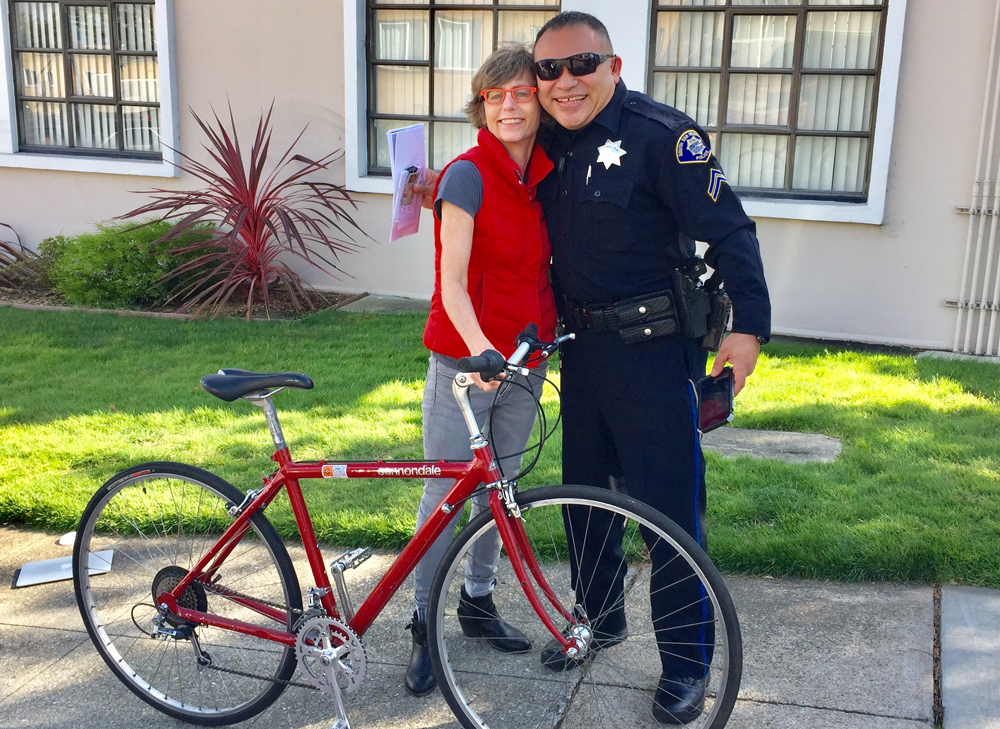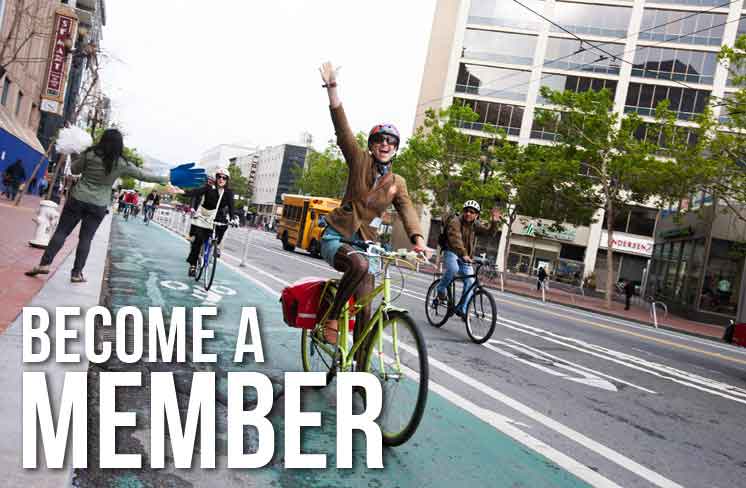Editors: This story was originally published in Issue 162 of our quarterly Tube Times magazine, one of many perks of membership in the San Francisco Bicycle Coalition.
In 2014, SF Bicycle Coalition member Beth Williams emerged from an event she was attending in the Mission District. She strolled back to where she had locked up her bike and found nothing remaining but the cable portion of her lock cut in two. Both her bike and her U-lock were nowhere to be seen.
“What I learned that night is that there is no 100-percent theft-proof lock,” Beth said.
Bike theft is a serious problem in San Francisco. In 2016, over 3,800 bikes were stolen at a cost of over $5 million, according to an estimate by Hoodline.
In a city where many are struggling to make ends meet, losing a bike can be disastrous. After only housing costs, transportation is the second-highest monthly expense for the average San Francisco household. And biking offers the affordable transportation that many residents rely on to remain living here.
Using a high-quality, hardened steel U-lock to secure both your rear tire and the rear triangle of your bike frame is among the most effective locking methods. Add a cable or second lock to secure your front tire, and the chances of keeping your bike are greatly improved. Members can find discounts on locks from an array of local bike shops at sfbike.org/discounts.
Two common locking mistakes are evident all over town, however. Some folks use locks that are too big, leaving space for thieves to access the lock with saws, bolt cutters and other tools. Employing the smallest U-lock possible decreases both the lock surface area and the angles available to would-be thieves.
Additionally, it is all too common to see U-locks securing just the top tube — that segment of the frame between the seat post and the handlebars. This method risks exposing more surface area of the U-lock to tampering and leaves both wheels at risk. It also opens up the possibility of a thief using the top tube for leverage against your U-lock.
Sadly, even the best locking arrangements only delay a determined thief. While some locking techniques are more formidable obstacles to thieves than others, no lock is absolutely certain to prevent theft, as Beth learned the hard way. Before even taking your bike out on the streets, though, there is one important step to take.
Registering with SAFE Bikes, a citywide bike registry, can go a long ways towards helping police recover your ride, should thieves strike. When officers recover stolen bikes, they turn to SAFE Bikes to look up the serial numbers. Police can then reach out to bikes’ rightful owners, using the contact information logged with SAFE Bikes.
Registration with SAFE Bikes is free, and there’s a link to their registration page at sfbike.org/theft. Registration was the first step toward the recovery of Beth’s bike.
After discovering her bike missing, Beth filed a police report at SFPD’s Mission Station. “I did everything recommended by the SF Bicycle Coalition,” Beth said. (Psst! Those recommendations are all available at sfbike.org/theft.)
Four days later, not having heard from the police, Beth began looking for a similar make and model to replace her beloved missing bike. She started with online sites where people resell bikes and — to her great surprise — she found her stolen bike listed for sale in South San Francisco.
“The description was extremely detailed about the gears and modifications made to the original bike,” Beth said. “They knew exactly how to market the bike. They just had beautiful details about it that made you think, ‘Wow, what a cool vintage bike!’”
“They knew more about the bike than I did!” she added.
Beth called the South San Francisco Police Department.
“My heart was pounding. South San Francisco Police suggested that I make arrangements to meet the seller, then come to the police station before the meeting,” Beth said. “Essentially, we set up a sting operation.”
Beth arranged to meet the seller near South San Francisco’s City Hall. Then she went to the police station in South San Francisco, where she met Officer Alvarez. Beth and Officer Alvarez hopped into a squad car and headed toward the meeting place she had agreed on with the person attempting to sell Beth her own bike.
Officer Alvarez dropped Beth three blocks away, and she approached the meet-up spot by foot.
“I felt a little bit at risk meeting this guy, not knowing how he would react when he realized he was being caught up in a sting,” Beth said. “I walked up and started talking with the seller. When I asked him if I could ride the bike and got on, police immediately swooped in and arrested the seller.”
The recovery was successful because Beth had recorded her bike’s serial number with SAFE Bikes and filed it away at home along with photos of her bike. Beth was able to take her bike home that day.
“The main thing to remember when you buy a new bike and you’re very excited is to be sure to take pictures of it and record your serial number. It lets you prove that it’s your bike,” Beth said.
While there’s no one guaranteed way to prevent bike theft or ensure the recovery of a stolen bike, Beth’s story shows the value of registering your bike and maintaining your own records, should the day arrive when you need that information.
The Tube Times is published quarterly as one of the many benefits to members of the SF Bicycle Coalition. For a complete list of membership benefits, or to join/renew today, click here.


